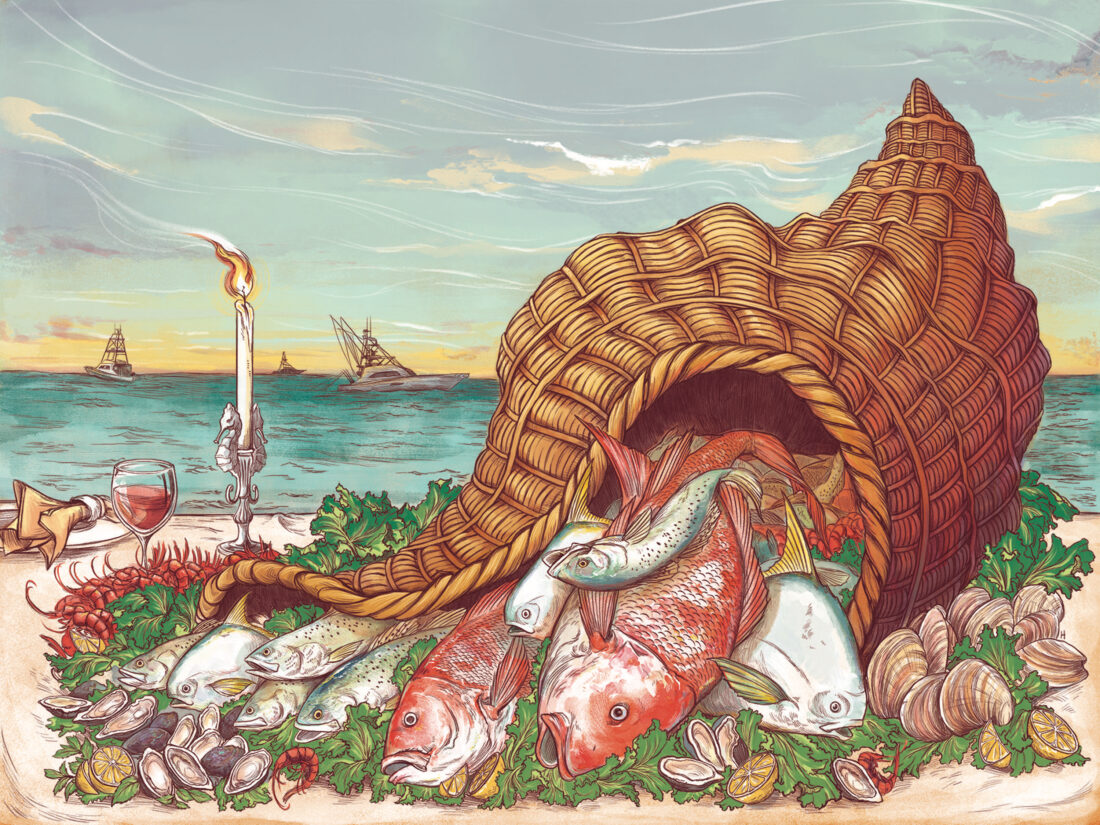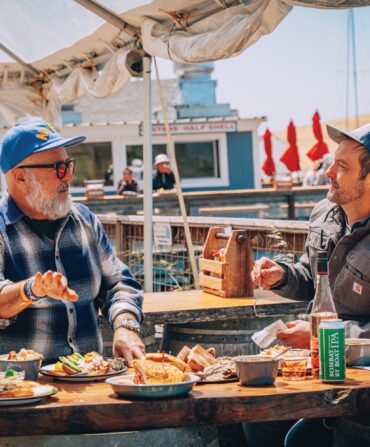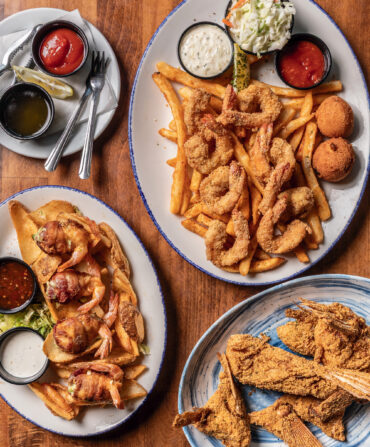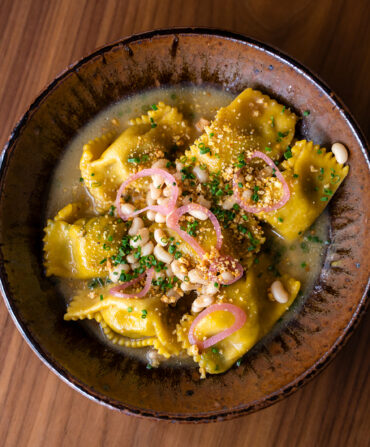My family and I have never exactly been Thanksgiving purists. My mother, who performed holiday cooking duties throughout my childhood, has always been a restless cook, her eye easily caught by the latest cranberry sauce variation or trendy string bean concoction. Noncanonical dishes often snuck onto the table, unannounced; I remember at least one mid-1990s pad thai discovered squatting between the gravy and mashed potatoes. Still, my brother, my father, and I formed enough of a tradition-minded coalition to insist on the general shape of the classic Thanksgiving meal. There are 364 days of the year for experimentation, went our thinking; this one was for turkey, even if, once my brother and I both moved to New Orleans, almost thirteen years ago, we did start experimenting with deviations like smoking and deep-frying.
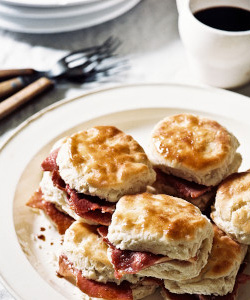
That changed the first Thanksgiving of COVID-19. My parents were stuck in New York lockdown and my brother at the New Orleans clinic where he is a medical director. Suddenly a foursome, my girlfriend, our two daughters, and I left for a sanitized condo in Perdido Key, Florida. And there, beneath wall hangings declaring the eternal verities that life is a beach and it is wine o’clock somewhere, we, like a new set of Pilgrims, celebrated our first Fishgiving.
The menu was simple: About two dozen raw Gulf oysters; three pounds of steamed Royal Red shrimp, a sweet and delicate deepwater species; and pompano, filleted with backbone left in, dressed with butter, lemon, and a light dusting of a local seafood spice blend discovered in the condo cabinet. There were martinis; it was marvelous. The next year, still under the pall of one viral surge or another, we were again alone. This time we headed for Orange Beach, Alabama, where we dined on Royal Reds, broiled speckled trout, and steamed Cedar Key clams.
I like how the spartan nature of rental kitchens enforces a simplicity to these meals: the identical sets of never-touched cookware, seemingly bought in some kind of Insta-Airbnb kit and flung haphazardly into the cabinetry; a floppy cutting board hiding beneath the sink; plastic salad tongs sitting lonely in a drawer. But what I really like is the number one condition that makes this new tradition possible: how every beach town between Mobile and Destin seems to have a good-to-fabulous independent shop selling fresh Gulf of Mexico seafood.
The king of these is Pensacola’s Joe Patti’s Seafood. The first time I walked into Joe Patti’s, I felt like I had stepped into the Louvre. I had heard of the Pensacola landmark for years. Friends coming home to New Orleans from Destin, Rosemary Beach, Navarre Beach, Port St. Joe, Apalachicola, and other points along the length of the Florida Panhandle would show up with coolers filled with fish and shrimp, and plastic containers of smoked tuna dip, a bright, creamy hint of what wonders lay just down the road.
Still, I was unprepared for what I found when I finally got to Pensacola myself. It is not hard to find Joe Patti’s, located on the waterfront not far from where its Sicilian-born namesake began selling seafood from his back porch in 1931; if, by chance, you miss the giant neon snapper emblazoned with the shop’s name, there are equally large letters spelling it out on the building itself. Inside, a counter stretches into the distance, sparkling with ice and laden with seemingly the entire cast of The Little Mermaid. Finfish from all over the country and world, piled in soft heaps of fillets or arranged, whole, in glittering mosaic. Mesh bags of top neck and cherry-stone clams; tubs of ice water overflowing with shrimp; shining red tuna steaks and snow-white halibut; silver-skinned frog legs laid out like troupes of ballerinas in plié; sacks of craggy oysters in their shells and plastic containers of them shucked; ziplock bags packed with orange mullet roe and white mullet milt. You take a number and wait until it’s sternly called. Things move quickly, so stress is high. When it’s your turn, one of a small army of men and women behind the counter fills your basket to order. If you choose a whole fish, he or she points to a large chart displaying alphabet-coded cleaning options—from boneless and skinless to head-on and gutted to cut into steaks. You name your letter, the fish disappears through a window, and it emerges a few minutes later, cut to specifications.
Within moments of arriving, a fantasy had taken full shape: I would rent an apartment within walking distance of Joe Patti’s—nothing fancy, as long as it had a full kitchen—and methodically cook my way through the entirety of its inventory.
Though there were enticing fish and shellfish from all over the world, what was most exciting was the bounty from the Gulf: snapper, pompano, speckled trout, grouper, and drum; blue crabs, Gulf oysters, and shrimp of all varieties. Why, you may ask, should this have been such a novelty for somebody living in New Orleans, a place where most of these products are amply and famously represented on local menus? The answer is, I don’t really know. It is one of the enduring mysteries of the Crescent City that it does not have a Joe Patti’s of its own—or even the kind of comparatively modest but delightful stores you find across the Panhandle. Instead, we have a patchwork of supermarket seafood counters and a dwindling number of shops that sell po’boys and other cooked food with a small selection of fresh fish on the side. On the Westbank, there is the chaotic old-world-feeling jumble of stalls at the Westwego Shrimp Lot. During the pandemic, the wholesaler American Seafoods began selling some product from its Seventh Ward parking lot. Still, by and large, trying to buy good, local seafood in New Orleans has been an inexplicably frustrating experience.
Jim Gossen, who has spent fifty years selling seafood all along the Gulf coast, speculates that it’s the waves of beach tourists that create the demand for fresh seafood in Panhandle towns (though the unused cookware says different), while New Orleans visitors are more likely to be dining at restaurants. Marcus Jacobs, the chef and co-owner of Marjie’s Grill and Seafood Sally’s in New Orleans, has a theory that too many longtime locals have friends or family who fish, so they get their seafood via the back door rather than a market. Whatever the case, Jacobs; his partner, Caitlin Carney; and the owners of the restaurant Carmo recently announced plans to open Porgy’s Seafood Market in Mid-City—an effort to sell more local seafood locally, in particular species like blue runner and Spanish mackerel that many don’t think of when they hear “Gulf seafood.”
That would be a lovely development, but I expect to remain partial to pointing my car east for a holiday weekend of fish cookery. Last year, my parents could finally join us for Thanksgiving. In a condo in Pensacola, we had pan-fried tripletail; ringlets of fresh squid, cooked rapidly in a glowing-hot pan until curled and hit with salt and a simple squeeze of lime; more pompano; fat orange sacs of mullet roe, gently poached in brown butter; and the now-obligatory Royal Reds. My mother made some cranberry thing. No turkey in sight. We were together, and for all of it, I was deeply thankful.


